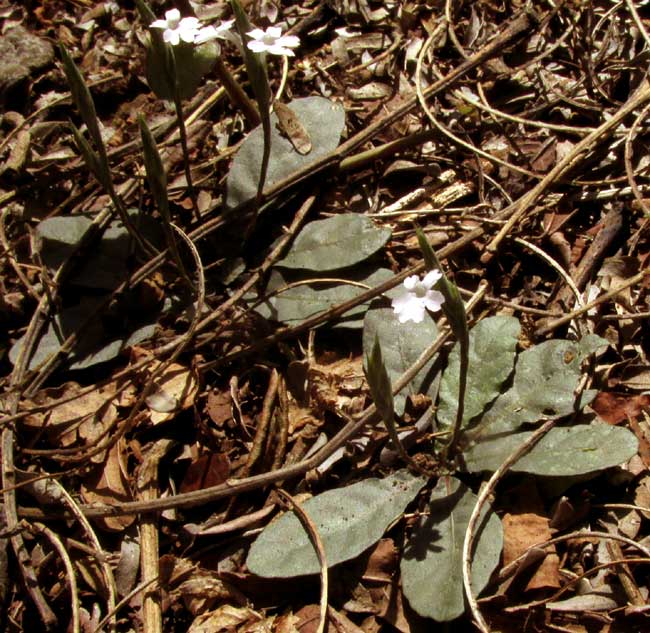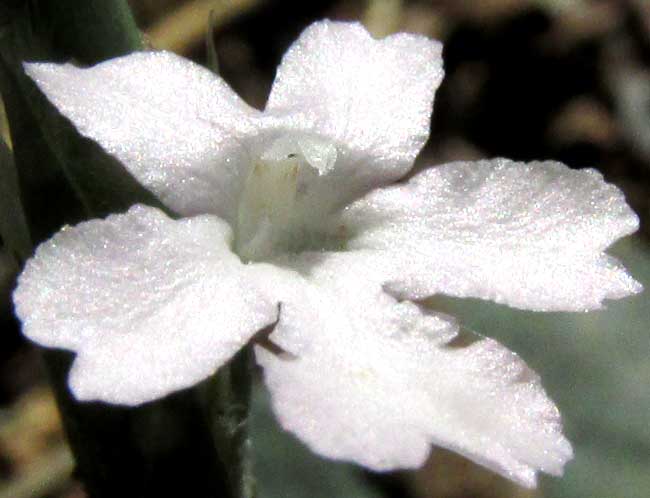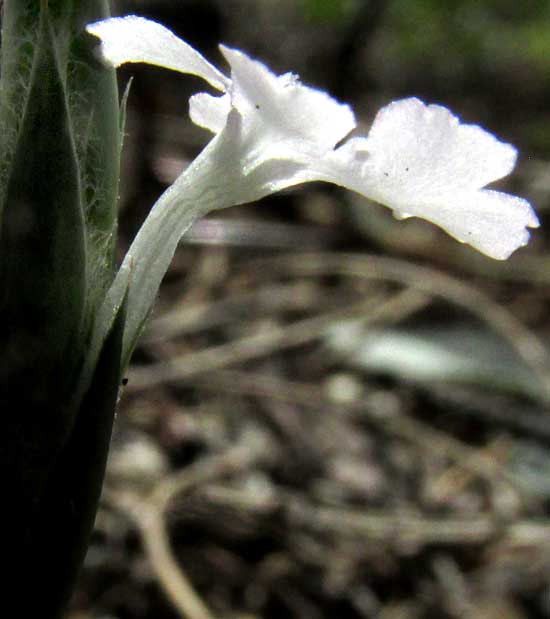Excerpts from Jim Conrad's
Naturalist Newsletter
from the April 10, 2016 Newsletter issued from Hacienda Chichen Resort beside Chichén Itzá Ruins; limestone bedrock; elevation ~39m (~128ft), N20.675°, W88.569°; central Yucatán state, MÉXICO
WHEATSPIKE SCALY STEM
A small wildflower blossoming during this unusual flush of shower-inspired greenness during the heart of the dry season is the ankle-high, stemless, white-flowered one shown below, rooted in very thin soil atop limestone rock along a trail through the shadowy woods:

Viewed from the front we can see that the flowers' five corolla lobes are notched at their tips, plus only two small stamens are present, and at the top of the corolla tube opening there's some kind of flap or tooth, all shown below:

Below you can see a side view of the flower showing that the corolla's slender, almost vertical tube curves outward and enlarges at its mouth:

In that picture also we see that the flower's calyx lobes are long with needle-like tips. A further important feature is that each flower is subtended by a stiff, green, conspicuous scale.
At first I thought that with such a corolla the plant had to belong to the Verbena Family, but eventually the importance of the two stamens and conspicuous scale below each flower dawned on me. Then it was clear that we had a member of the Acanthus Family, the Acanthaceae. At that point it became a simple chore of comparing our plant with each species of that family listed for the Yucatan.
Our little wildflower is ELYTRARIA BROMOIDES, sometimes known by the awkward name Wheatspike Scaly Stem. It enjoys an English name because it occurs from southern Texas south through Mexico to about Guatemala.
Some authors say that one way to distinguish Wheatspike Scaly Stem from other scaly stem species -- other species of the genus Elytraria -- is that Wheatspike Scaly Stem's leaves are crinkle-margined, while other species' aren't. You can see that our plant's leaves are smooth. Maybe it's because our plant was in a shady environment on thin soil atop limestone, or maybe it's a variation. The species is so poorly known that it's hard to say.
However, I bet that someday a student of the genus will be tickled to see our pictures and to know that in April it can flower here in the central Yucatan Peninsula, and that at least sometimes the leaves of ours aren't crinkle-margined.